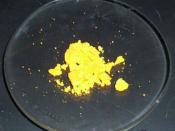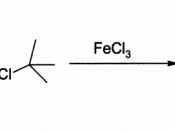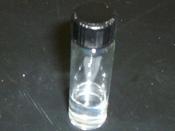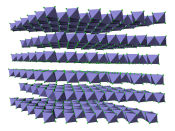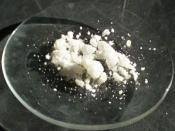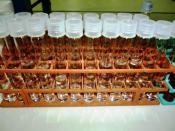Nomenclature To test the reactions of Tin(ii) and Tin(iv) compunds. To test the reactions of Iron(ii) and Iron(iii) compounds. And to convert copper(ii) into copper(i). Method : Refer to Method sheet. Materials : Test Tubes (4) Iron(iii) chloride Potassium ferricyanide Test Tube stand Iron(ii) sulphateCopper(ii) Sulphate Tin(ii) chloride Sodium Hydroxide Ammonium Thiocyanate Tin(iv) chloride Hydrogen Peroxide Distilled Water Ammonium Thiocyanate Ammonium Chloride Copper(ii) Thiocyanate Ammonium Sulphide Ammonium Hydroxide Sodium Sulphite Observations : Before After Tin (ii) Chloride small white crystals Produced a bad rotten egg smelled Distilled Water clear transparent liquid odour. Also a brown liquid and brown Ammonium Sulphide greeny, transparent liquid precipitate were formed. Tin (iv) Chloride small, white crystals Produces yellow liquid not Distilled Water same as above transparent with yellow precipitate. Ammonium Sulphide same as above No odour formed Iron (iii) Chloride Solid yellow powder Orangey brown liquid formed, with Distilled Water same as above orange precipitate.
No odour. Sodium Hydroxide Clear, colourless liquid Iron (ii) Sulphate small white crystals Greenish-teal liquid formed with Distilled Water same as above brownish precipitate. Sodium Hydroxide same as above When H2O2 is added liquid looked Hydrogen peroxide clear colourless liquid like substance in Test Tube 1 Iron (iii) Chloride same as above Same result as produced in Test Distilled Water same as above Tube 1. Ammonium Chloride clear colourless liquid Ammonium Hydroxide clear colourless liquid Iron (ii) Sulphate same as above Dark greeny-black liquid formed. Distilled Water same as above When H2O2 is added, the substance Ammonium Chloride same as above bubbled, producing Oxygen gas, and Ammonium Hydroxide same as above became a darked brown colour than Hydrogen Peroxide same as above Test Tube 3 Iron (iii) Chloride same as above Dark Blue-Green liquid with same Distilled Water same as above coloured precipitate were formed. Potassium Ferricya- clear yellow, transparent nide liquid Iron (ii) Sulphate same as above lighter bluey-green liquid with Distilled Water same as above same coloured precipitate formed. Potassium Ferricya- same as above nide Copper (ii) Sulphate Transparent blue liquid Green liquid and darker green Ammonium Thiocya- clear colourless liquid precipitate. Produced Copper (ii) nate Thiocyanate. Copper (ii) Thiocyanate Same as above Clear liquid very light purple coloured Sodium Sulphite Solid white powder precipitate. Conclusions and Follow Up: 1. In the first 2 reactions between Tin Chlorides, they produce different Tin Sulphides because of the odour that is produced in the first reaction and not the second. Also it is physically evident that the produced compounds are different because they are totally different coloured liquids and precipitates. The different colours support the different effects that Ammonim Sulphide has on different Tin compounds. 2. Tin(ii) Chloride + Ammonium Sulphide Tin(ii) Sulphide + Ammonium Chloride Tin(iv) Chloride + Ammonium Sulphide Tin(iv) Sulphide + Ammonium Chloride 3. When the Iron reactions take place, it is evident that different substances are formed when different Iron compounds are reacted. This is evident because in the two reactions the two products are totally different colours with totally different coloured precipitates. 4. Iron (iii) Chloride + Sodium Hydroxide Iron(iii) Hydroxide + Sodium Chloride Iron (ii) Chloride + Sodium Hydroxide Iron(ii) Hyroxide + Sodium Chloride 5. In the reaction of Iron(ii) Hydroxide and and Hydrogen Peroxide I think the compound FeH3O is produced. 6. Potassium ferricyanide is able to tell the difference between Iron (ii) and Iron (iii) because it reacts differently with the two compounds. 7. It was observed that copper (ii) thiocyanate could have been converted to copper (i) thiocyanite because when the reaction took place the product was made of mostly the same elements that copper (i) thiocyanite was. 8. FeBr = Iron (ii) Bromide Cu S = Copper (i) Sulphide Hg O = Mercury (i)Oxide Bi S = Bismuth (iii) Sulphide Mg P = Magnesium Phosphide CaO = Calcium Oxide UO = Uranium Oxide SnO = Tin(iv) Oxide PbCl = Lead (iv) Chloride Zn N = Zinc Nitride Conclusion : In our testing, We have discovered that Although compounds may be made up of the first element, if you changed the number of that first element, it becomes a totally different compound. Like for example, Tin (ii) Chloride and Tin (iv) Chloride. These 2 compounds are made up of the same basic elements but are completely different compounds. Also we discovered that with the addition of a certain chemical, you can convert the element to a different number. For example, Copper (ii) Thiocyanate was added to Sodium Sulphite, and it produced Copper (i) Thiocyanate
